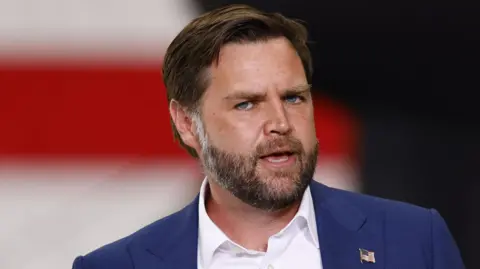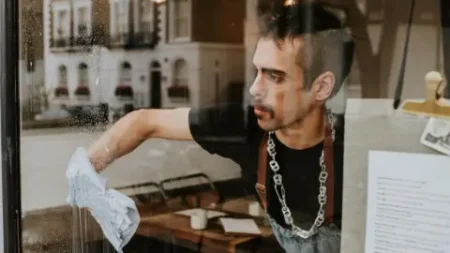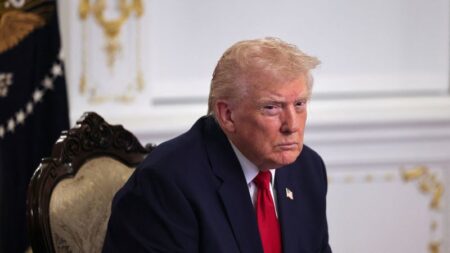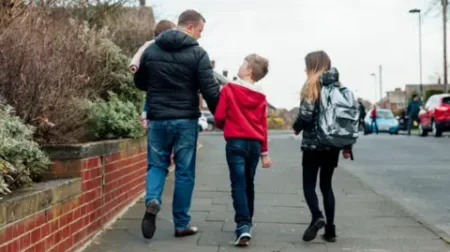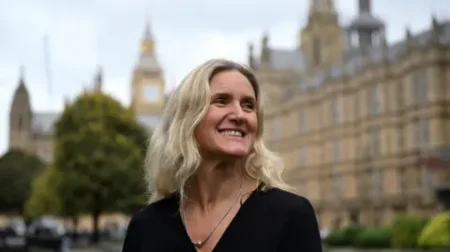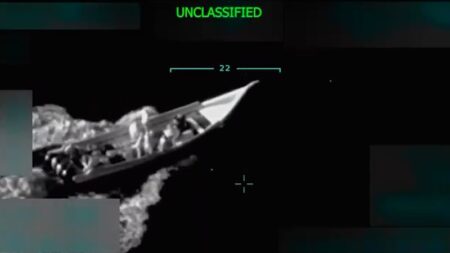JD Vance, the Vice President of the United States, has made headlines with his recent arrival in Scotland, marking another chapter of his visit to the United Kingdom. He is reportedly on a private family vacation and has chosen to stay in a luxurious country estate situated just outside Kilmarnock in Ayrshire. His journey began as he landed on Air Force Two at Prestwick Airport, showcasing the pomp and circumstance that typically accompanies high-profile dignitaries. Following his arrival, he was escorted to the estate in a motorcade, ensuring privacy and security.
This visit follows a recent trip made by President Donald Trump to Scotland, where he indulged in leisure activities golfing at his courses located in Aberdeenshire and Turnberry. Vance’s arrival has stirred conversations once again about U.S. political figures and their engagements abroad, especially since he has chosen to spend his holidays in the same region shortly after the President’s outing.
Vance’s choice of residence, Carnell Estates, is no ordinary place; it is a privately-owned estate that boasts a historical 14th-century tower and a sprawling mansion encompassing ten bedrooms, set on approximately 2,000 acres of land. The estate’s proximity to golfer Donald Trump’s course—about a 40-minute drive away—highlights the intertwining relationships between U.S. officials and the sprawling Scottish landscapes often associated with leisure and luxury.
The backdrop of Vance’s holiday has not been free from controversy. As he was welcomed at the estate, a significant presence of police was noted, a response to organizers of a pro-Palestinian protest who demonstrated outside. This protest involved activists, many waving Palestinian flags, making their voices heard while being supervised by law enforcement. The demonstrators engaged in chants and drummed pots and pans, a form of vocal protest. The police initially guided protesters to relocate, hinting at the delicate balance authorities maintain during such politically charged visits.
With the added layer of security, airspace restrictions have also been enacted around the estate, expected to last until Sunday, the day of Vance’s planned departure. The Vice President is rumored to spend five days in Scotland, reminiscent of the duration of the President’s recent visit. Such lengthy stays by high-ranking officials often lead to both heightened local media interest and community involvement.
Before his holiday commenced, Vance had been quite active in the UK, having met with U.S. troops stationed at the Royal Air Force Base in Fairford, Gloucestershire. During this prior engagement, he received briefs on the base’s military capabilities, further establishing his role within U.S. defense while abroad. Notably, while his trip is officially labeled a private visit, Vance also engaged in discussions with David Lammy, the UK’s Foreign Secretary, touching upon pressing international affairs including the situation in Gaza.
The ongoing conversations around Vance’s excursions have also ignited political ripples back at home. Earlier this year, he publicly criticized Scotland’s legislation concerning buffer zones around abortion clinics, arguing that it impinges on free speech. These comments garnered responses from Scottish lawmakers, particularly Gillian Mackay, who accused Vance of spreading misinformation about the law that she championed.
Vance’s personal connections to Scotland—he describes himself as a “Scots-Irish hillbilly at heart”—paint a multifaceted picture of his relationship with the region. His ancestors settled in the Appalachian region of the U.S. over three centuries ago, adding a historical resonance to his travels that extends beyond political duties.
In conclusion, JD Vance’s holiday in Scotland is not merely a personal retreat; it is interwoven with political implications, local reactions, and significant historical connections. His interactions, from leisure to meetings with political figures, demonstrate the multifaceted roles that modern-day politicians undertake while navigating complex domestic and international landscapes. This trip could catalyze conversations about U.S. relations with the UK and the broader implications of international political visits.





